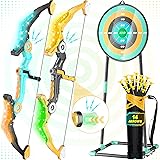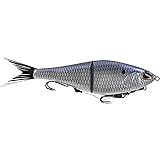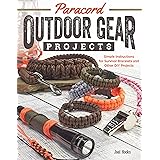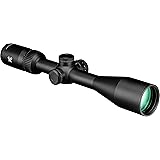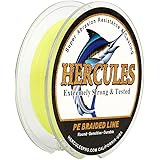Mastering Extreme Winter Survival: Insights from a -21°C Wilderness Test
Imagine yourself deep within a snow-laden wilderness, the biting wind a constant companion, and the temperature plummeting to a staggering -21°C. This isn’t just a hypothetical scenario; it’s the stark reality depicted in the accompanying video, where true grit meets extreme cold under the shelter of a fallen tree. While the visual journey showcases the raw struggle and ingenuity required, the nuances of surviving such unforgiving conditions extend far beyond what the camera can capture.
True extreme winter survival is a delicate balance of preparedness, knowledge, and an unwavering will to endure. This detailed guide delves into the advanced strategies and critical considerations essential for thriving, not just surviving, when faced with heavy snow and sub-zero temperatures. We’ll explore the sophisticated principles of thermoregulation, shelter construction, resource acquisition, and the psychological fortitude that underpins every successful wilderness endeavor.
The Imperative of Shelter: Beyond a Fallen Tree in Heavy Snow
When the mercury drops to -21°C, an adequate shelter transitions from a convenience to a life-sustaining necessity. As demonstrated by the innovative use of a fallen tree in the video, leveraging natural resources is paramount. However, simply being “under” something is rarely sufficient against such brutal cold; the goal is to create a microclimate that drastically reduces heat loss.
A fallen tree offers a fantastic structural foundation, acting as a windbreak and providing a ridgeline. However, the true art lies in enhancing this natural feature. Effective insulation is key: piling snow around the perimeter, covering gaps with boughs, and creating a ceiling with interlocking branches dramatically improves the R-value of your shelter. This technique, known as a debris hut or snow quinzee hybrid, traps warmer air, preventing convection and conduction from robbing your core temperature.
Advanced Shelter Construction Principles for -21°C
Survivalists understand that the efficiency of a shelter directly correlates with its ability to maintain a positive thermal gradient. For temperatures as low as -21°C, merely blocking the wind is insufficient; you must actively create warmth and retain it.
- Snow as an Insulator: Heavy snow, often seen as an adversary, is a powerful insulator. Its crystalline structure traps air, making it an excellent barrier against heat transfer. Learning to sculpt snow into a quinzee, igloo, or even just using it to bank up a lean-to can increase internal temperatures by many degrees compared to the outside.
- Debris Layering: Beyond the fallen tree, consider a multi-layered approach to your walls and ceiling. Start with a solid outer layer of evergreen boughs, then pack it densely with dry leaves, moss, or fine twigs. This creates numerous air pockets, further insulating the inner chamber.
- Thermal Reflectors: If available, incorporating a space blanket or even shiny rock surfaces can reflect radiant heat back into the shelter. Imagine if you could line the interior of your improvised structure with something that bounced back even a fraction of your body heat; it makes a significant difference.
- Ventilation vs. Insulation: A common misconception is to seal a shelter completely. While insulation is critical, a small vent is necessary to prevent carbon monoxide buildup from a fire and to allow moist air to escape, reducing condensation and preventing your sleeping bag from becoming damp and losing its insulating properties.
Firecraft in Extreme Cold: A Non-Negotiable Survival Tool
The ability to create and sustain fire is perhaps the most fundamental skill for extreme winter survival, offering warmth, light, psychological comfort, and a means to cook and purify water. At -21°C, even starting a fire becomes a formidable challenge as all materials are cold, potentially damp, and numb fingers hinder dexterity.
Successful firecraft in heavy snow begins with meticulous preparation and the right materials. Collecting tinder, kindling, and fuel *before* you need it is crucial, keeping them as dry as possible, perhaps even inside your jacket. Contrasting this proactive approach, waiting until you’re hypothermic makes success far less likely.
Mastering Fire Ignition and Maintenance in Sub-Zero Conditions
Even with ample preparation, the cold can compromise your ability to ignite a flame. Therefore, redundancy in ignition sources is non-negotiable.
- Ignition Sources: Ferro rods are highly reliable in wet and cold conditions, unlike matches that can become damp or lighters that fail at extreme temperatures. Always carry multiple methods, and protect them from moisture.
- Tinder Selection: Natural tinders like birch bark, fatwood, or cattail fluff must be bone dry. Alternatively, prepared tinder, such as cotton balls soaked in petroleum jelly, dryer lint, or commercial fire starters, are invaluable. Imagine trying to fray damp bark with frozen fingers; prepared tinder bypasses this obstacle entirely.
- Building the Fire Bed: In heavy snow, direct contact with the ground will quickly extinguish your fire. Create a raised platform using green logs or stones to elevate the fire and allow for airflow. This prevents the fire from melting into the snow and ensures a steady oxygen supply.
- Fuel Management: For sustained heat at -21°C, you’ll need a substantial amount of dry, dense wood. Focus on standing deadwood, which is often drier than fallen logs. The goal is a long-burning fire, not a short burst, which requires consistent feeding and careful arrangement of fuel for optimal combustion.
The Pursuit of Sustenance: Catch & Cook in a Frozen World
The video’s “Catch & Cook” element highlights a critical aspect of extreme winter survival: caloric intake. At -21°C, your body expends an enormous amount of energy just to maintain core temperature. A caloric deficit will rapidly lead to weakness, impaired judgment, and ultimately, hypothermia. Therefore, acquiring and preparing food is not merely about hunger; it’s about fuel for thermogenesis.
Hunting and foraging in heavy snow presents unique challenges. Prey animals are less active or have migrated, and edible plants are scarce or dormant. This demands a flexible and opportunistic approach, leveraging every available resource.
Winter Foraging and Hunting Strategies for Calories
Sustaining yourself in a frozen environment requires intimate knowledge of the ecosystem and adaptability. Unlike temperate climates with abundant plant life, winter survival often leans heavily on animal protein and fats.
- Ice Fishing: If near a frozen body of water, ice fishing can be a highly effective method to procure protein. Basic gear, like a sharp implement to cut through ice and a simple line with bait, can yield results. Even small fish provide valuable calories and essential nutrients.
- Snaring and Trapping: Small game, such as rabbits, squirrels, and birds, are often present even in heavy snow. Learning to set simple snares and traps requires minimal tools and can be surprisingly effective over time. Placement is key: look for animal tracks and natural funnels.
- Winter Foraging: While limited, certain plant resources can still be found. Conifer needles (pine, spruce, fir) can be steeped for vitamin C-rich tea, preventing scurvy. Inner bark of some trees (like birch or pine) contains starches and sugars. Additionally, certain lichens can be processed for consumption, though they require careful preparation.
- Cooking for Maximum Nutrition: Once food is acquired, efficient cooking is vital. Boiling can make tough meat tender and potable water from snow, while roasting over an open fire sears in flavor and nutrients. For survival, every calorie counts, so minimize waste and maximize digestibility.
Water Procurement and Hydration in Extreme Cold
While surrounded by heavy snow, dehydration might seem counterintuitive, yet it’s a significant risk in extreme cold. Your body loses water through respiration (visible as breath vapor), perspiration (even in cold), and increased urine production. At -21°C, consuming enough water is just as critical as finding food or shelter.
Eating snow directly is highly discouraged. The energy expenditure required to melt and warm the snow within your body will actually lead to a net loss of core temperature and hasten hypothermia. Furthermore, raw snow can contain impurities and pathogens. Contrarily, proper hydration supports all bodily functions, including thermoregulation, making it paramount.
Effective Water Strategies for Sub-Zero Temperatures
Reliable water procurement methods are essential to maintain physiological function and avoid dehydration in freezing conditions.
- Melting Snow and Ice: The most common method involves melting snow or ice over a fire. Use a metal container, if available. If not, a primitive container made from bark or even a plastic bag carefully suspended can work. Always bring the water to a rolling boil for at least one minute to purify it.
- Solar Still (Limited): While less effective in extreme cold and heavy snow due to low sun angles, a rudimentary solar still could potentially collect small amounts of meltwater during daylight hours. This is typically a secondary or tertiary option.
- Pre-Boiled Water: Any opportunity to boil a larger batch of water should be taken. Store excess water in a container, ideally insulated to prevent re-freezing. Imagine the relief of having readily available warm water on a frigid morning without the immediate need to start a fire.
- Hydration Discipline: Actively remind yourself to drink. Thirst signals can be dulled in cold environments. Consuming warm liquids, like herbal teas from foraged plants, not only hydrates but also provides a small internal warming effect, aiding thermoregulation.
Mental Fortitude: The Unseen Pillar of Extreme Winter Survival
Beyond the tangible skills of shelter-building, fire-making, and food acquisition, the most critical tool for extreme winter survival at -21°C is the human mind. The psychological toll of isolation, relentless cold, hunger, and the constant threat of hypothermia can be immense. Maintaining a positive mindset, setting small achievable goals, and focusing on the immediate task at hand are vital for sustained effort and good decision-making.
Survival is as much a mental game as it is a physical one. A negative attitude can lead to apathy, reducing the will to fight and making one more susceptible to the elements. However, by cultivating resilience, hope, and a clear thought process, an individual can overcome seemingly insurmountable odds, transforming a dire situation into a testament to human endurance.


